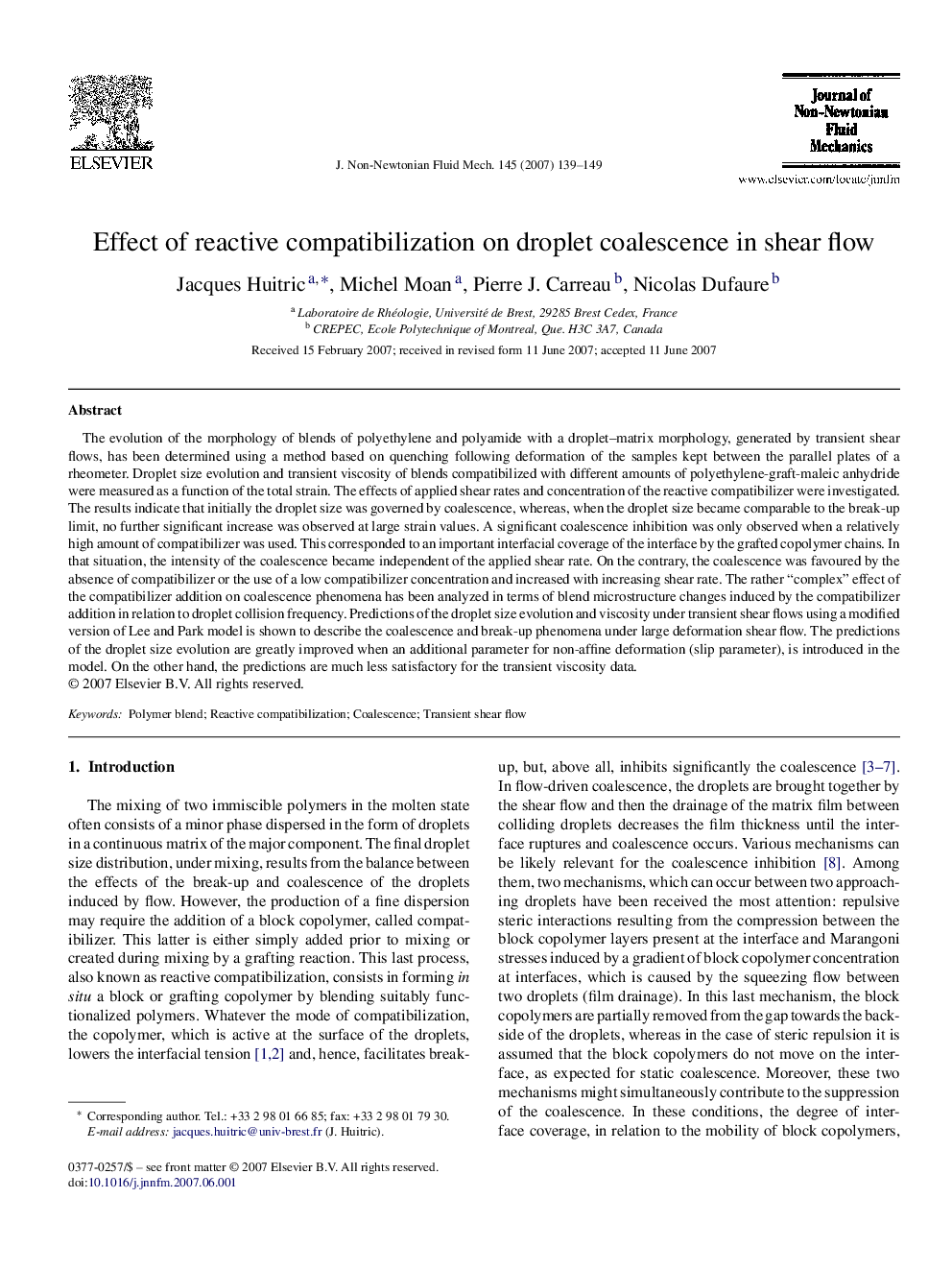| Article ID | Journal | Published Year | Pages | File Type |
|---|---|---|---|---|
| 671563 | Journal of Non-Newtonian Fluid Mechanics | 2007 | 11 Pages |
Abstract
The evolution of the morphology of blends of polyethylene and polyamide with a droplet-matrix morphology, generated by transient shear flows, has been determined using a method based on quenching following deformation of the samples kept between the parallel plates of a rheometer. Droplet size evolution and transient viscosity of blends compatibilized with different amounts of polyethylene-graft-maleic anhydride were measured as a function of the total strain. The effects of applied shear rates and concentration of the reactive compatibilizer were investigated. The results indicate that initially the droplet size was governed by coalescence, whereas, when the droplet size became comparable to the break-up limit, no further significant increase was observed at large strain values. A significant coalescence inhibition was only observed when a relatively high amount of compatibilizer was used. This corresponded to an important interfacial coverage of the interface by the grafted copolymer chains. In that situation, the intensity of the coalescence became independent of the applied shear rate. On the contrary, the coalescence was favoured by the absence of compatibilizer or the use of a low compatibilizer concentration and increased with increasing shear rate. The rather “complex” effect of the compatibilizer addition on coalescence phenomena has been analyzed in terms of blend microstructure changes induced by the compatibilizer addition in relation to droplet collision frequency. Predictions of the droplet size evolution and viscosity under transient shear flows using a modified version of Lee and Park model is shown to describe the coalescence and break-up phenomena under large deformation shear flow. The predictions of the droplet size evolution are greatly improved when an additional parameter for non-affine deformation (slip parameter), is introduced in the model. On the other hand, the predictions are much less satisfactory for the transient viscosity data.
Related Topics
Physical Sciences and Engineering
Chemical Engineering
Fluid Flow and Transfer Processes
Authors
Jacques Huitric, Michel Moan, Pierre J. Carreau, Nicolas Dufaure,
